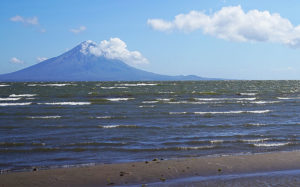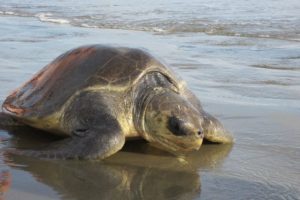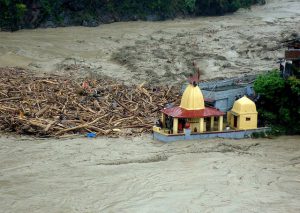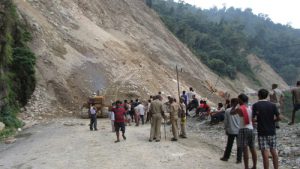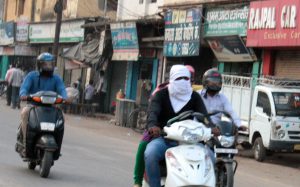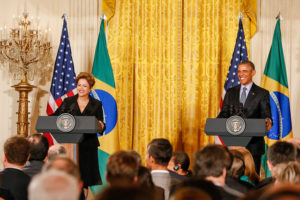Deforestation caused by illegal loggers, poachers and gold-miners is the main threat to Nicaragua’s environment, not the controversial Chinese-funded 173-mile interoceanic canal, according to the Executive Secretary of the government’s Nicaragua Grand Canal Commission, Paul Oquist. The canal will bisect the country and require an unprecedented dredging operation in Lake Nicaragua, Central America’s largest fresh water lake.
The proposed Nicaragua Canal has been heavily criticised for its environmental and social impact assessment (ESIA), carried out by UK consultancy Environmental Resources Management (ERM), that critics said was rushed and flawed. It neglected to address the implications of climate change, amongst other defects, its critics said.
But Oquist, speaking in London recently, claimed that at the national level Nicaragua would foster greater resilience to climate change with policies that will accompany the canal, such as reforestation, and that these would yield a “net positive environmental impact”. He did not elaborate on how the net environmental impacts of the canal would be calculated.
“The great environmental problem we have is not the canal, it’s deforestation,” Oquist told Diálogo Chino.
But for Professor Sudeep Chandra, a biologist at the University of Nevada who was a member of an expert review panel that was invited to comment on a selection of the ESIA, Mr Oquist’s argument is short-sighted. Professor Chandra believes that ERM has not properly accounted for climate change in its evaluation. “From what the panel saw, there was little or no information that addressed the development and influence of the canal project in relation to impending climate change,” he explained.
In 2013, the Nicaraguan government granted a US$ 50billion, 50-year renewable concession to construct and control the canal to the newly-formed Hong Kong Nicaragua Development Group (HKND), which is headed by comparatively little-known Chinese businessman Wang Jing. Construction is set to be completed by 2020.
Mr Oquist claimed that the expected increase in government revenues from investment in the canal will go towards protecting against the threats posed by illegal deforestation in the Bosawas reserve and other forested areas. Bosawas is Nicaragua’s largest biosphere and is situated some 400km from the planned canal route.
Weak science underpins plans
The 15-member review panel, which met at Florida International University (FIU) in March this year, concluded that ERM’s limited data sets rendered it “scientifically indefensible”. ERM made only four chapters of the 14-volume study available for review and the Nicaraguan government has yet to announce whether it will make the full document publicly available. Under Nicaraguan law it is not obliged to do so.
Asked by Diálogo Chino whether the two-year timeframe afforded to ERM to carry out the ESIA precluded proper safeguarding against the ‘unknowns’ of climate change, Oquist responded; “we don’t plan to just wait for climate change to take effect, we have a very comprehensive plan for reforestation in all of its forms to help keep Nicaraguan water levels up.”
Between 50,000 and 70,000 thousand hectares of forest are cleared annually in Nicaragua, and only around 22,000 hectares are restored, according to Oquist, who stressed the need to bring deforestation rates down and increase restoration to around 50,000 hectares per year.
“We want to reach, in this decade, with these new funds, a historical inflection point in which we have more trees at least planted in one year than the year before,” said Oquist, adding that forest restoration was Nicaragua’s “other major collateral activity”.
But new or restored forests may not compensate for those destroyed by the canal. Referring to animal habitats in the path of the canal route, the panel stated; “Many of the impacts of construction and operation of the canal will be long term, and some may be irreversible.”
Protests grow
As Oquist toured the world presenting the canal plans to potential investors, those opposing the project in Nicaragua also voiced their concerns. Protestors numbering between 15,000 and 30,000, the largest gathering yet, marched in the city of Juigalpa which is situated 30km inland from the north-eastern border of Lake Nicaragua. Protestors accused President Daniel Ortega of selling the country to the Chinese.
Despite the resistance to Chinese investment expressed by the protesters, Oquist claimed that there was “no tension” between HKND and Nicaraguan labour organizations and added that the Chinese company was “very socially sensitive”. But he conceded that Nicaragua’s education and training shortfall meant that local people would not be considered for the highest skilled jobs, such as freightliner pilots, who require up to 20 years of training. The allocation of jobs, he admitted, would need monitoring.
Elsewhere in Latin America, Chinese investment in new projects has sometimes been conditional on a given number of jobs being occupied by Chinese.

